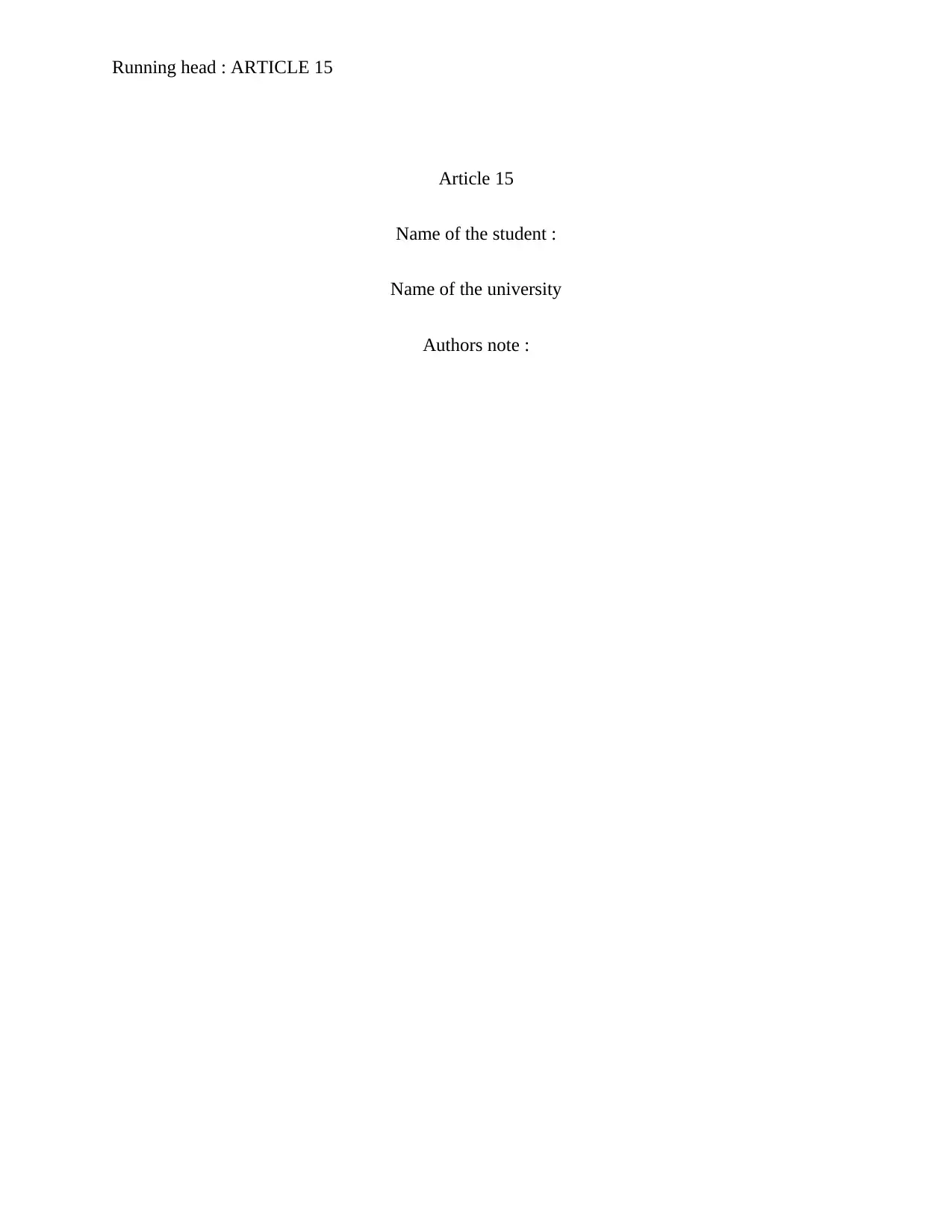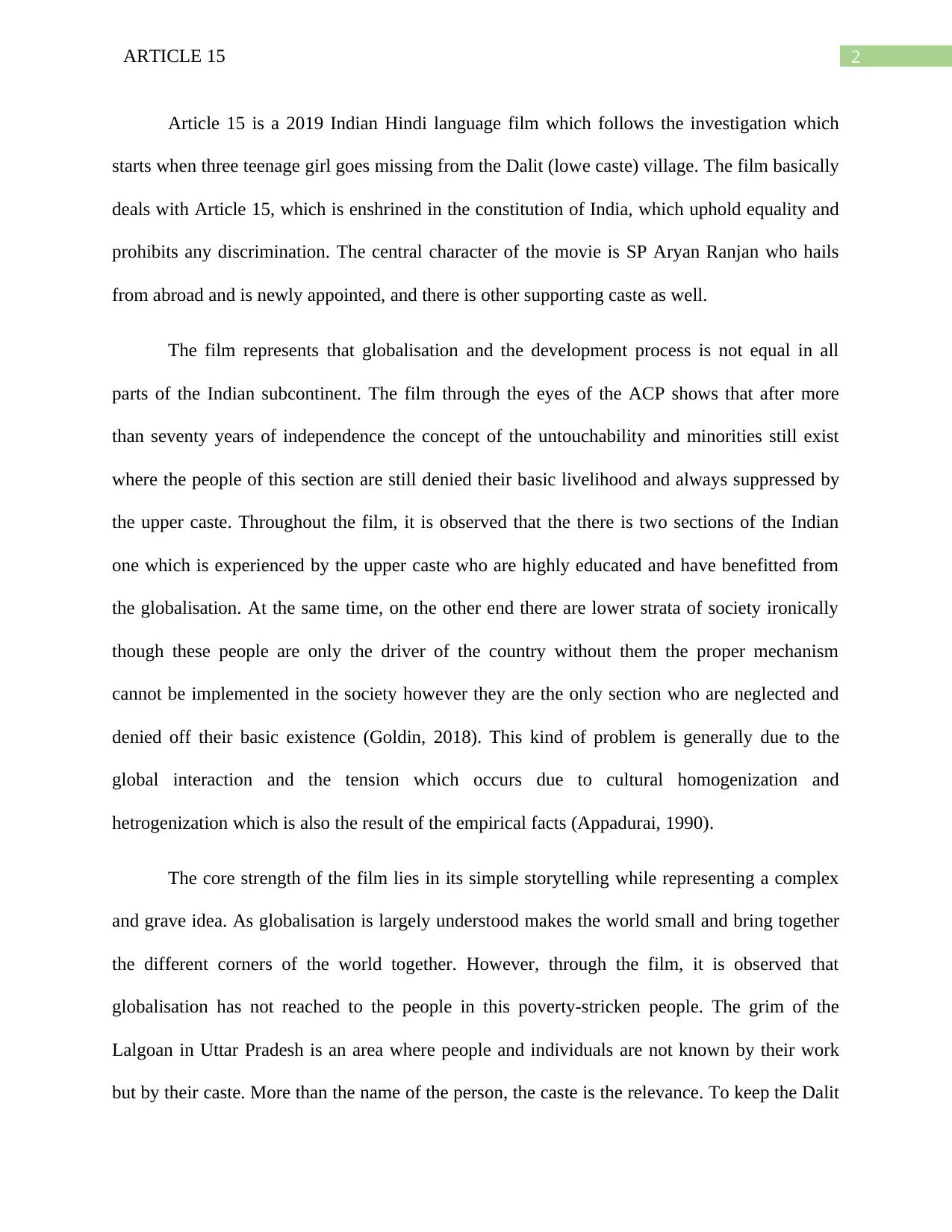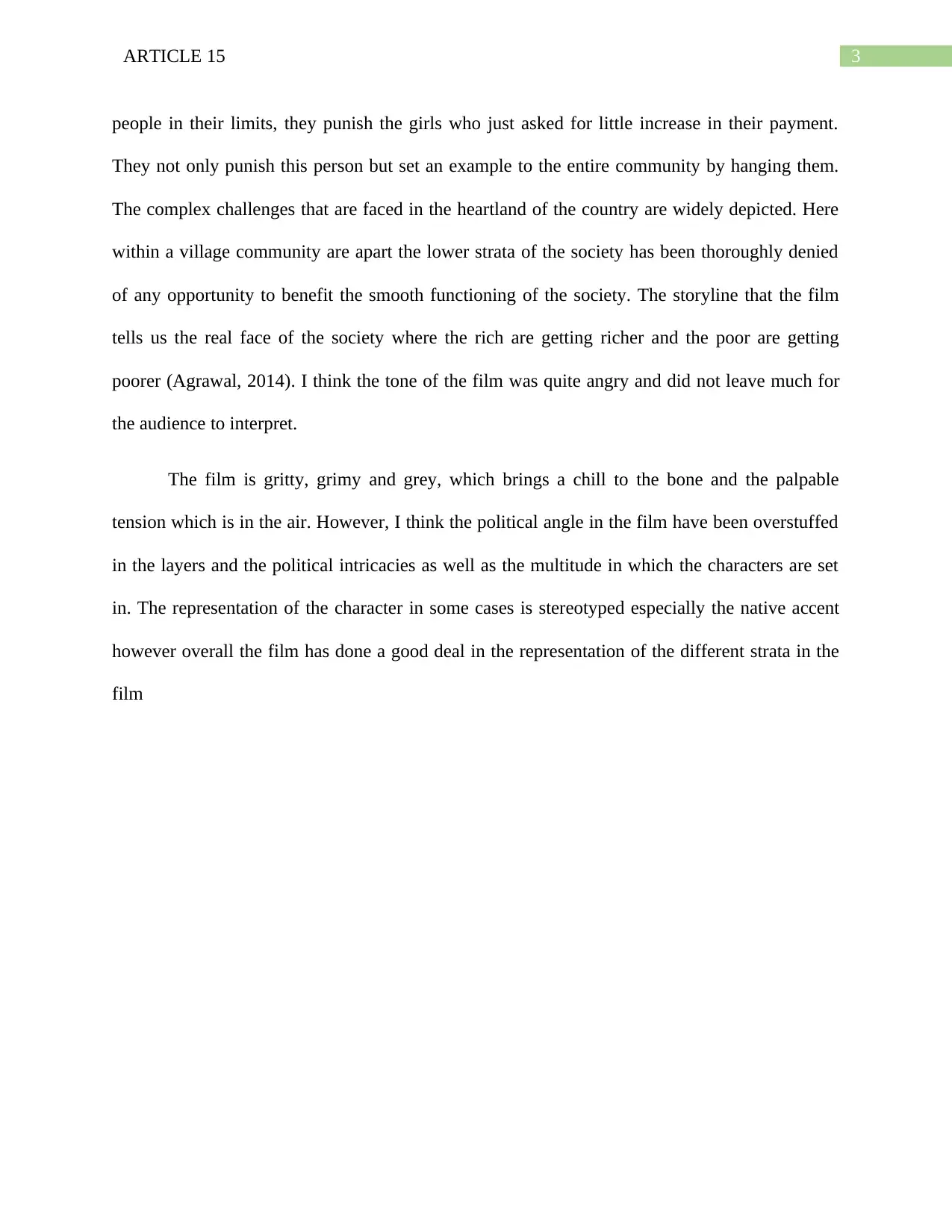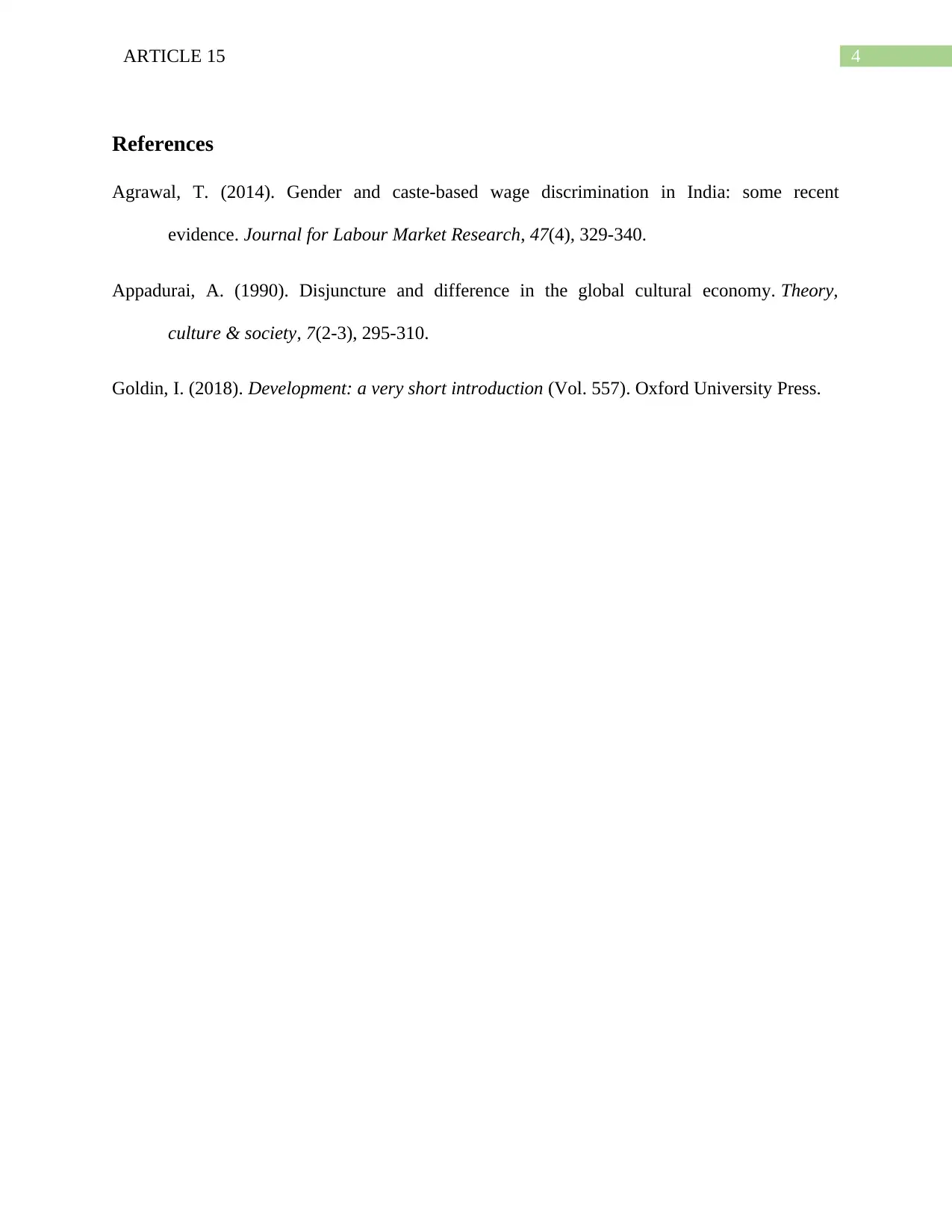Report on Article 15: Film's Portrayal of Social Issues in India
VerifiedAdded on 2022/09/23
|4
|723
|26
Report
AI Summary
This report analyzes the 2019 Indian Hindi film 'Article 15,' which delves into the investigation of three missing teenage girls from a Dalit village. The film critically examines Article 15 of the Indian constitution, which upholds equality and prohibits discrimination. Through the perspective of a newly appointed police officer, the film highlights the persistence of caste-based discrimination and social inequality in contemporary India, particularly in the context of globalization and development. The analysis explores the film's narrative techniques, its representation of different social strata, and its commentary on the disparity between the privileged upper castes and the marginalized lower castes, who are often denied basic rights and opportunities. The report references academic sources to support the arguments, including the works of Goldin (2018), Appadurai (1990), and Agrawal (2014), to provide a comprehensive understanding of the film's social and political significance, including its strengths and weaknesses.
1 out of 4






![[object Object]](/_next/static/media/star-bottom.7253800d.svg)